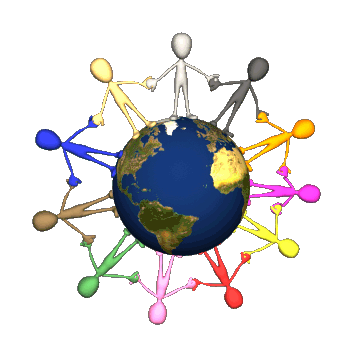In the contemporary landscape of computer science, mathematics serves as the foundational bedrock, interweaving through various disciplines. The synergistic relationship between mathematics and computer science is not merely an academic curiosity but a profound exploration of logical constructs, algorithmic efficiency, and computational theory. Herein lies a comprehensive examination of the multifarious areas of mathematics that are critical to the discipline of computer science, underscoring both their distinct applications and the unifying principles they embody.
1. Discrete Mathematics
Discrete mathematics is often heralded as the cornerstone of computer science. It encompasses the study of structures that are fundamentally discrete rather than continuous. Essential elements include set theory, graph theory, combinatorics, and logic. Set theory lays the groundwork for understanding data organization, while graph theory facilitates the modeling of networks. Combinatorial principles are pivotal in algorithm analysis, aiding in the optimization and efficiency assessments of computational processes. Furthermore, mathematical logic forms the underpinnings of formal verification methods, a crucial component in the development of reliable software systems.
2. Linear Algebra
Linear algebra finds its niche within various computer science applications, particularly in graphics and machine learning. The manipulation of vectors and matrices is fundamental in computer graphics, enabling the rendering of images and visualizations. In the realm of machine learning, linear algebra undergirds effective algorithms such as linear regression and principal component analysis. The geometrical insights afforded by concepts such as eigenvalues and eigenvectors are indispensable for understanding data transformations and dimensionality reduction techniques.
3. Probability and Statistics
In an age characterized by data-driven decision-making, the roles of probability and statistics are increasingly paramount. These mathematical disciplines provide the tools necessary for data interpretation, enabling practitioners to derive insights from stochastic processes. Concepts such as random variables, distributions, and statistical inference are integral for algorithmic design in machine learning and artificial intelligence. Moreover, the Bayesian framework has garnered prominence, offering a robust approach to handle uncertainty and improve predictive modeling.
4. Calculus
Calculus, with its focus on continuous change and motion, plays a less overt but important role in computer science. Techniques from calculus are applied in algorithm optimization, particularly in iterative methods and convergence analysis. Additionally, calculus is essential in machine learning, where gradient descent—a method for finding the minimum of a function—is widely utilized. The differential and integral calculus also find applications in modeling fluid dynamics and simulate physical systems in computational physics.
5. Numerical Analysis
Within the ambit of computer science, numerical analysis is crucial for developing algorithms that approximate solutions to mathematical problems. This discipline addresses the limitations of computer arithmetic, focusing on error analysis and the stability of numerical algorithms. It encompasses methods such as interpolation, numerical integration, and differential equations, which enable the resolution of complex scientific and engineering problems via computational means. Numerical optimization is another impactful application, enhancing resource allocation and scheduling tasks in numerous industries.
6. Boolean Algebra
Boolean algebra is a pivotal mathematical structure that underlies the design of digital circuits and logic. It provides the framework for evaluating logical expressions, which is fundamental in computer programming and circuit design. The simplification of Boolean expressions leads to optimized circuit implementations, thus enhancing performance and reducing resource consumption in electronic devices. Furthermore, the principles of Boolean algebra extend to relational databases, impacting data retrieval and manipulation.
7. Graph Theory
Graph theory permeates numerous areas of computer science, impacting algorithms, networking, and data structures. It studies the relationships between pairs of objects and has profound implications for optimizing routing protocols, social network analysis, and organizational structures within databases. Algorithms such as Dijkstra’s for shortest paths and Kruskal’s for minimum spanning trees are prime examples of the efficacy of graph-theoretic principles in practical applications.
8. Game Theory
Game theory, although often associated with economics, has made significant inroads into computer science, particularly in the realms of artificial intelligence and network security. It analyzes competitive strategies in environments where multiple agents interact, facilitating the creation of algorithms that are capable of making reasoned decisions. Applications range from auction design in online platforms to resource allocation in distributed systems, reflecting the depth and utility of mathematical strategies in multi-agent scenarios.
9. Information Theory
Information theory quantifies the transmission, processing, and storage of information. It provides critical insights into data compression and coding theory, which are instrumental in telecommunications and computer networking. Measures such as entropy and data redundancy guide engineers in designing more efficient communication systems, ensuring reliable data transfer even in the presence of noise. As the digital landscape evolves with exponentially increasing data, the relevance and application of information theory continue to burgeon.
Conclusion
The convergence of mathematics and computer science illustrates an intricate tapestry where abstract concepts manifest into practical technologies. Each branch of mathematics serves a unique and indispensable function within the broader ecosystem of computer science. This symbiotic relationship is not only foundational for theoretical computer science but also essential for innovative advancements in technology. As we delve deeper into the complexities of computation, the mathematical frameworks will undoubtedly remain integral, continually enriching both disciplines and paving the way for future breakthroughs. The fusion of logical reasoning and computational prowess engenders a domain rich with possibilities, promising to redefine the boundaries of our understanding and capabilities.












